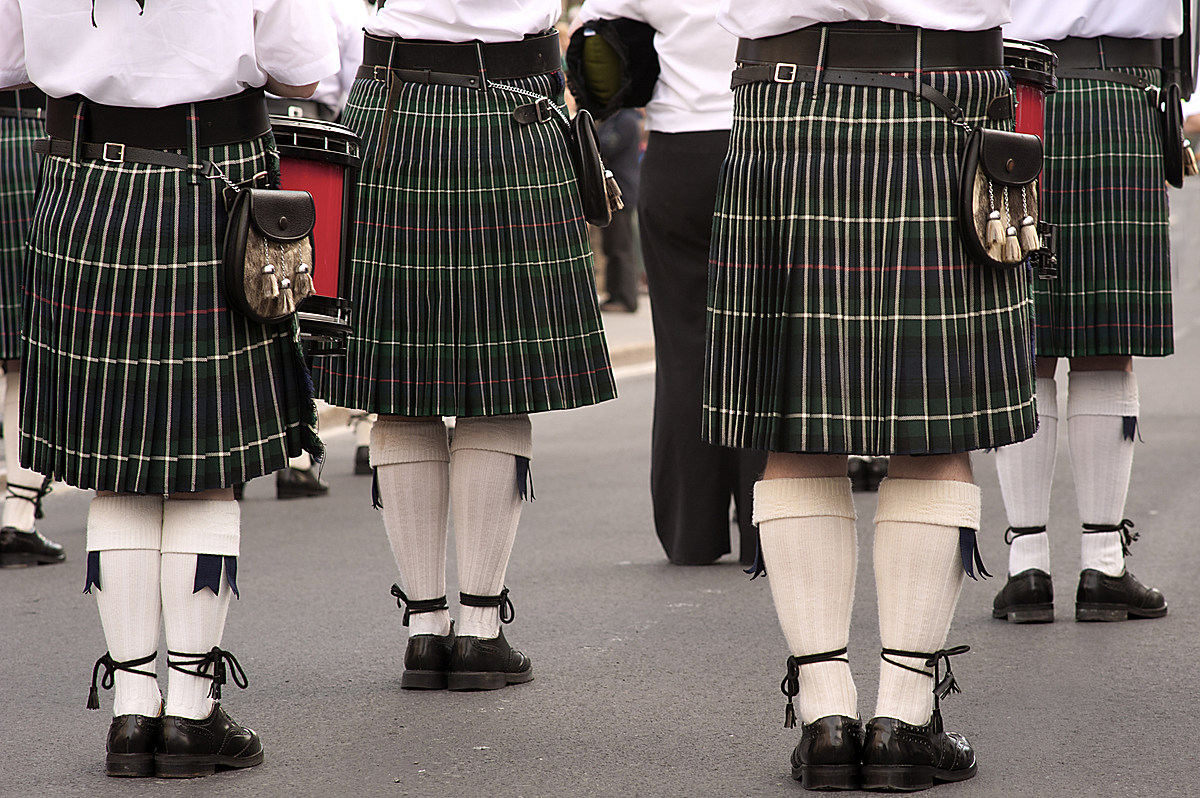
The Anderson tartan is an iconic representation of Scottish heritage, woven with deep cultural significance and distinctive design elements that stand out in the realm of textile design. This tartan not only embodies the spirit and history of the Anderson clan but also showcases the exquisite craftsmanship that goes into tartan weaving. In this comprehensive article, we explore the multifaceted aspects of Anderson tartan fabric, tracing its historical roots, examining its design intricacies, its symbolic richness, modern adaptations, and its broad appeal in global fashion.
Historical Background of Anderson Tartan
The origins of the Anderson tartan can be traced back several centuries, deeply embedded within the Scottish tradition of clan identification through specific patterns and colors in woven fabric. Initially serving practical and camouflaging purposes in the harsh Scottish landscapes, tartans evolved to become deeply symbolic representations of familial and regional allegiances. The Anderson clan, originating from the Lowlands and later spreading across Scotland, adopted their unique tartan as a visual expression of their identity and unity. Over the centuries, as tartan wearing became more regulated and then revitalized during the 19th century, the Anderson tartan was standardized, capturing the essence of the clan’s heritage in its colors and stripes. This standardization during the Victorian era, driven by a renewed interest in Scottish culture, solidified the tartan’s role as a cultural icon, preserving its legacy through documented patterns and contributing to its prominence in Scottish ceremonies and gatherings.
Distinctive Design Elements of Anderson Tartan
The design of the Anderson tartan is a meticulous arrangement of colors and lines, each with specific symbolic meanings attributed to the clan’s history and environment. The primary colors—blue, green, black, and a hint of red—create a visually striking pattern that is both aesthetically pleasing and rich in symbolism. The blue symbolizes the clan’s loyalty and the integrity of its people, reflecting the serene skies and vast lochs of Scotland. Green represents the lushness of the Scottish Highlands, an homage to the fertile lands that the clan once roamed and cultivated. Black offers a reminder of the clan’s resilience and strength through Scotland’s turbulent history, while red accents speak to the courage and sacrifice of the Anderson ancestors. This color scheme is not arbitrary but is carefully crafted to convey the storied past and values of the Anderson clan, making the tartan a narrative tapestry as much as a garment.
Cultural Significance and Symbolism
Beyond its visual appeal, the Anderson tartan carries significant cultural symbolism that resonates with the Scottish people and the Anderson descendants. Each wearing of the tartan is a celebration of heritage and an act of pride, connecting individuals to their ancestral roots and the collective memory of their clan. The tartan’s role in cultural rituals, such as weddings, funerals, and public celebrations, underscores its importance as a ceremonial fabric that binds the community. It acts as a cultural passport, instantly recognizable and steeped in tradition, offering a sense of belonging and identity to those who wear it. This symbolism is further enriched in the context of global Scottish diaspora communities, where the tartan serves as a tangible link to the homeland, fostering a sense of unity and continuity among Scots far from their native land.
Modern Adaptations in Textile Design
The adaptability of the Anderson tartan in contemporary fashion and textile design illustrates its enduring relevance. Modern technology in textile manufacturing has allowed for variations in fabric blend and weight, making the tartan more versatile and accessible for various uses beyond traditional kilts. Designers have innovated on the classic patterns, incorporating the tartan into modern fashion items such as jackets, dresses, and accessories, which appeal to a global audience. These adaptations are careful to honor the tartan’s traditional roots while making it relevant to contemporary trends. Moreover, interior designers have also embraced the tartan for home decor products, such as throw pillows, blankets, and upholstery, extending the fabric’s presence beyond apparel and enriching living spaces with a touch of Scottish flair.
The Scottish Kilt in Anderson Tartan Fabric
The Scottish kilt in Anderson tartan fabric is a striking representation of Scotland’s rich cultural heritage. Featuring a vivid and intricate pattern of azure blue, red, green, and white, the Anderson tartan is distinctive and easily recognizable. Traditionally worn by the Anderson clan, this tartan kilt is not only a symbol of familial pride but also a statement of timeless style and craftsmanship. The Scottish kilt made from Anderson tartan is often seen at formal events, Highland games, and cultural celebrations, embodying the spirit and tradition of Scotland with every pleat and fold.
The Global Appeal of Anderson Tartan
Anderson tartan’s impact extends well beyond Scotland, capturing the hearts of international audiences with its distinctive pattern and deep-rooted history. Its presence in global fashion shows, international Scottish festivals, and multicultural weddings speaks to its widespread appeal. The tartan is not just a fabric but a global symbol of Scottish identity, cherished by those of Scottish descent and admired by enthusiasts of cultural textiles around the world. The international popularity of the Anderson tartan underscores the universal appeal of tartans in general, which transcend cultural boundaries to become cherished elements of global heritage fashion.
Conclusion
In conclusion, the Anderson tartan fabric stands as a testament to Scotland’s rich textile traditions, characterized by distinctive features that make it a standout element in both historical and modern textile design. With its deep roots in Scottish history, symbolic design elements, and adaptability to contemporary fashion, the Anderson tartan continues to be a vital part of Scotland’s cultural expression and a beloved icon in the global textile industry. Whether worn by a member of the Anderson clan or a fashion aficionado halfway across the world, the Anderson tartan remains a vibrant, living piece of Scottish heritage.
Frequently Asked Questions
1. What are the traditional colors found in Anderson tartan?
– The Anderson tartan primarily features a combination of blue, green, black, and red. These colors are arranged in a specific pattern that symbolizes the Anderson clan’s heritage and values, with blue representing loyalty, green symbolizing the lush Scottish landscape, black denoting strength and endurance, and red indicating courage and sacrifice.
2. How can I authenticate an Anderson tartan fabric?
– To ensure the authenticity of an Anderson tartan fabric, it is recommended to purchase from reputable Scottish or tartan-specific retailers who provide information about the tartan’s weave, fabric type, and origin. Authentic tartans are often accompanied by a label or certificate that details the tartan’s registration and its historical significance.
3. Can the Anderson tartan be used for purposes other than clothing?
– Yes, the Anderson tartan is versatile and can be used for a variety of purposes beyond traditional clothing such as kilts and scarves. It is popular in home décor items like cushions, throws, and upholstery. Additionally, smaller accessories like tartan-covered notebooks, bags, and even tartan-patterned shoes can incorporate the Anderson tartan for a stylish nod to Scottish heritage.
4. Is there a specific occasion or event where wearing Anderson tartan is particularly appropriate?
– Anderson tartan can be worn at any Scottish cultural event, clan gatherings, weddings, and festivals where showcasing one’s heritage is celebrated. It is particularly poignant to wear Anderson tartan during events that involve the Anderson clan or on occasions like Burns Night and St. Andrew’s Day, where Scottish culture is the focus.
5. How should I care for my Anderson tartan garments to ensure their longevity?
– Anderson tartan garments should ideally be dry cleaned to maintain their color and fabric integrity, especially if the fabric is wool-based. For everyday maintenance, avoid prolonged exposure to sunlight to prevent fading, and store in a cool, dry place. For tartan items that are used frequently, such as tartan throws or kilts, brushing the fabric regularly and airing it out can help preserve its appearance and texture.


